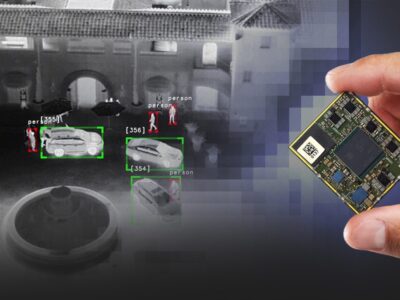Ceva has launched its second generation 5G new radio (NR) modem IP for chips in the Internet of Things (IoT).
PentaG2 is aimed at accelerating the proliferation of new chips for mobile broadband and IoT, and to reduce the entry barriers for handset OEMs looking to internalize 5G modem design. PentaG2 is a comprehensive hardware/software IP platform that combines advanced DSPs with special purpose accelerators for optimal signal chain processing, to deliver a 4X improvement in power efficiency over the first generation which has been used by companies such as Sequans.
The recent Ericsson Mobility Report forecasts that cellular IoT will comprise 5.5 billion of the overall 8.9 billion cellular connections in 2027, up from 1.9 billion cellular IoT connections in 2021. Within this, the number of fixed wireless access (FWA) connections is expected to grow from 90 million in 2021 to reach almost 230 million in 2027.
PentaG2 platforms will initially be offered in a number of configurations.
PentaG2-Max is targeting handsets and FWA terminals as well as mmWave, NR-Sidelink and cellular V2X (C-V2X) applications and AR/VR. Ceva says this is the world’s only complete IP offering able to efficiently process workloads for 3GPP releases 16 and 17, looking forward to 5G advanced, for both Sub-6 and mmWave 5G broadband, with a 4X performance/area improvement in data-path processing.
PentaG2-Lite supports a range of reduced capacity use cases, including LTE Cat1 and future 3GPP Rel-17/18 NR RedCap (Reduced Capacity, also called NR-Lite). PentaG2-Lite is a lean baseband implementation with complete processing chain acceleration and using a small footprint DSP controller to meet the most stringent power budgets.
Both configurations offer the flexibility to allow customers combine their own proprietary algorithms and IP, such as channel estimation or advanced equalization with the PentaG2 platform via standard interfaces.
“While 5G today is predominantly associated with smartphones, it offers an immense opportunity to expand the use of cellular technology to new markets that are not fully utilizing the potential of 5G, including industrial, robotics, wearables, healthcare, automotive, fixed wireless access and smart grid,” said Guy Keshet, Vice President and General Manager of the Mobile Broadband Business Unit at Ceva.
“These new verticals open the door to semiconductor companies and OEMs to develop application-specific 5G modems in-house rather than relying on traditional, costly cellular modems from incumbent cellular vendors,” he said. “PentaG2 bridges the design gap to develop a 5G modem by providing the full baseband processing platform in a cost and power efficient solution, which can also be leveraged by handset OEMs looking to internalize their 5G modem design.”
PentaG2 includes a complete set of programmable accelerators and coprocessors, for the first time including a Bit Demodulation Unit, supporting entire Rx bit and LLR processing, Bit Modulation Unit for entire transmit path bit processing and an equalizer and MAC engine co-processor Unit. It also includes a 5G LDPC Encoder/Decoder and a 5G Polar Encoder/Decoder accelerator.
Other hardware accelerators include HARQ, MLD, Multi-radix DFT, Turbo FEC and Viterbi FEC, and a neural network coprocessor for 5G link adaptation. All accelerators come with standard AXI interfaces for ease of integration. The platform also includes a scalar DSP for PHY control, hardware acceleration scheduling, and running the protocol stack. The PentaG2-Max also features a vector DSP with 5G ISA extensions for handling workloads required for channel estimation.
The PentaG2 platform also provides a complete L1 SW functional implementation of all 5G processing chains, running on the control DSP and utilizing all the platform’s hardware accelerators, including PDSCH, PUSCH, PDCCH and PUCCH.
PentaG2 also includes a System-C simulation environment that allows system engineers, architects and software developers to model, profile and debug their designs before committing to silicon. This simulator supports all PentaG2 components and interfaces seamlessly with MATLAB for algorithmic development. The whole PentaG2 system can be emulated on a FPGA platform for further verification.
PentaG2 is available for licensing to lead customers now and for general licensing in the second half of 2022.
www.ceva-dsp.com/product/ceva-pentag/
Related Ceva articles
- Ceva unveils core for DSP control processing in 5G
- Ceva’s record year points to future direction
- Ceva in $33m move to full custom chip design
Other articles on eeNews Europe
- Low power UWB chip for wireless AR smart glasses
- 32bit RISC-V cores are customisable for TensorFlowLite AI
- X-Fab remains on allocation after boom year
- Ponte Vecchio 3D supercomputer processor uses five process nodes
- ST hints at analog in-memory computing chip
- Tool adds fuzz testing for cybersecurity
 If you enjoyed this article, you will like the following ones: don't miss them by subscribing to :
eeNews on Google News
If you enjoyed this article, you will like the following ones: don't miss them by subscribing to :
eeNews on Google News




